Capturing Nostalgia with Srinivas Bhakta

“At NID, we animated on paper using a light box and shot under QAR (Quick Action Recorder), adjusted the number of exposures for each drawing and checked the timing of the action” says Srinivas Bhakta, a veteran animator from NID Ahmedabad. Graduating in the 1990’s Srinivas has seen the Indian Animation scene evolve from pencils to pixels.
Srinivas currently works as a Senior Lecturer at School of Design and Media, Nanyang Polytechnic, Singapore. Beyond being an educator, he also creates short animation films that have been screened at festivals like Annecy, Hiroshima and Animamundi. In this feature we explore the stories behind his newest animated shorts - Konkani Chitra Kavitha

Growing up in the small town of Kanhangad in Northern Kerala, Bhakta found himself drawn to art. He says,” I remember drawing from a very early age, participating in and winning school festivals. From the age 16 -19, I started to grow an interest in comics and drew a few strips for local Malayalam magazines.”
Watching films in the local theatre in Kanhangad bordering Kerala and Karnataka, Srinivas’ interest grew in the field. Reading from his stepbrothers Malayalam literature collection, he imagined stories into cartoons, caricatures and comics.
During the early years of studying Physics, Srinivas scripted and drew comics for Malayalam magazines.
“When I was doing my degree in physics, through a friend who was also interested in drawing, I came to know the National Institute of Design in Ahmedabad. Even though we did not have much idea about Design, our intuition said, this is a good option to pursue, and which turned to be a right decision.“
It was only when Srinivas joined the National Institute of Design (NID), Ahmedabad that he learned of animation. The numerous international films screened at the Film club nudged him into the art.
“I like the aspect of drawings coming to life to tell a story/concept. Since I enjoyed drawing, I decided to learn more about 2D animation”
Talking about how animation was done during his years in college he says, “At NID, we animated on paper using lightbox and shot under QAR (Quick Action Recorder), adjust number of exposures for each drawing and check the timing of the action. Once finalized we will transfer our drawings on animation cels, color it and shoot under Oxberry Camera. We will come to know the results only 3 to 4 weeks later once it is processed in a lab in Mumbai. We were not able to see the product as instant like now. There are times things go wrong and had to reshoot resulting more delay than we could expect.”
Srinivas relied on art, illustration and design books to learn new techniques. NID always hosted talks by numerous Indian and International artists, often screening or showing their work with the batch.
“We spend our time in libraries. If one buys a book, it will be shared around. Sometimes we chance upon Xeroxed copies of handwritten notes by well-known animators too, such as Richard Williams and Eric Goldberg.”

With studios like Ram Mohan Studio, Prasad Studio, other film and advertising agencies established in metro-cities like Mumbai, Chennai and Hyderabad, Srinivas found himself in the booming city of Bangalore.
“As we graduated there was a boom in Multimedia (Interactive CD-ROMS, edutainment) and Bangalore had few set ups. If I remember correctly, there were many advertising firms but only a handful of pure design studios.”
Soon, he moved to Hyderabad to be a faculty member at Zed Institute of Creative Arts where he taught as well as helped students to produce animated films. It was here that Srinivas found his passion for teaching. It was also here that he realized the need to create his own animations to compliment his teaching.
When one of his friends invited Srinivas to Singapore to help with a multimedia project, he met a Canadian teacher who recommended him to Nanyang Polytechnic. He says, “In that comfortable environment, I could find balance between teaching and practicing animation. Time really flew, and now it is almost 25 years that I have been in Nanyang Polytechnic!”
It was Srinivas’ animated film- ‘Elephant: OK’ that was his biggest hit. Bagging 3 awards including a ‘special Jury prize’ at Singapore International Festival Silver Screen Awards, this film was also turned into a children’s book published by Puffin, New Zealand.




Stills from ‘Elephant: OK’
Under the banner of Hommade Animation, Srinivas has created numerous independent films; all scripted, animated and produced by him. With the support from relatives and friends, he has won awards in film festivals across the globe.


Stills from ‘My Father Is a Washerman’

Explorations for ‘ Frog in a Well’
His 2009 film ‘My Father Is a Washerman’ won the First prize at Digicon6 Singapore chapter and ‘Frog in a Well’ (2011) won the “Creativity Award” in Japan Digicon6 Competition.


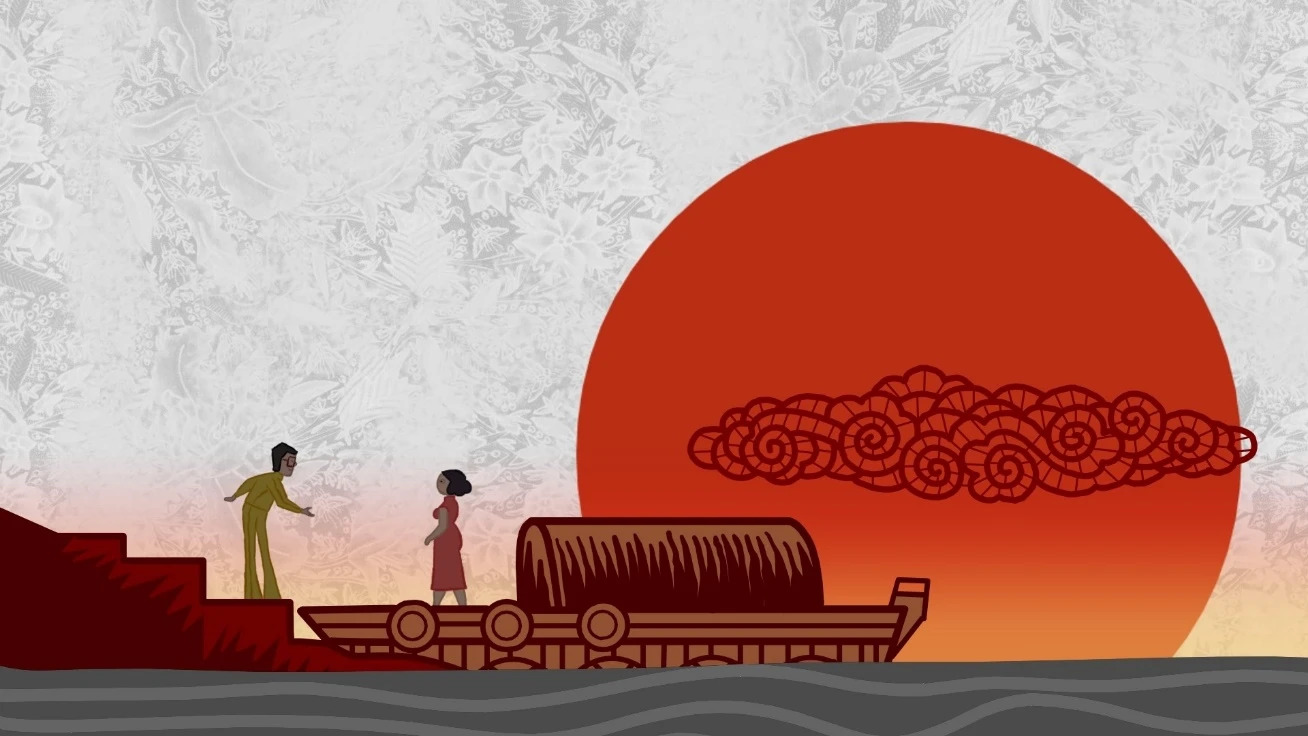
from ‘Curry Fish Head’
His Film ‘Curry Fish Head’ that tells the narrative of a girl living in Singapore, oscillating between the 1960’s and the present day won the Best Technical Production at Singapore Heritage Short Film Competition (2016). His film ‘Golden Egg’ also bagged the Student’s Jury award at Asia Peace Festival, Islamabad (2017).
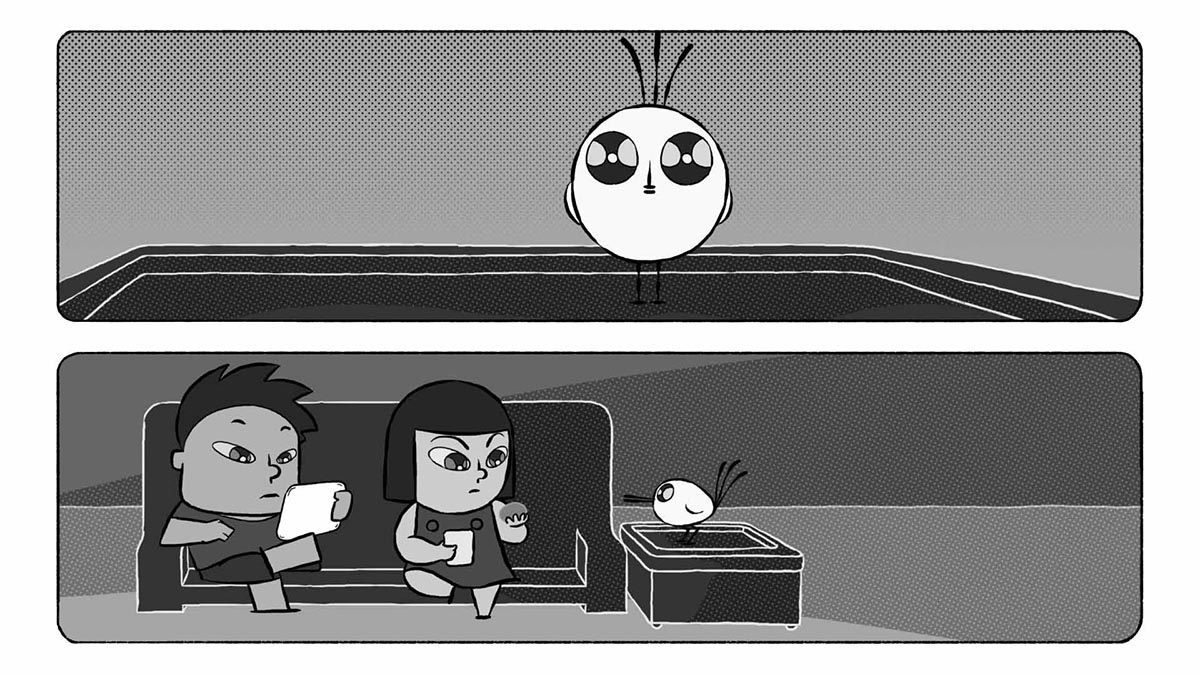

Still and Posters from ‘Golden Egg’
With these accolades under his belt, Srinivas shifted his focus towards creating films in his mother tongue- Canarese Konkani; a minority dialect spoken by Konkani people of the Canara sub-region of Karnataka.
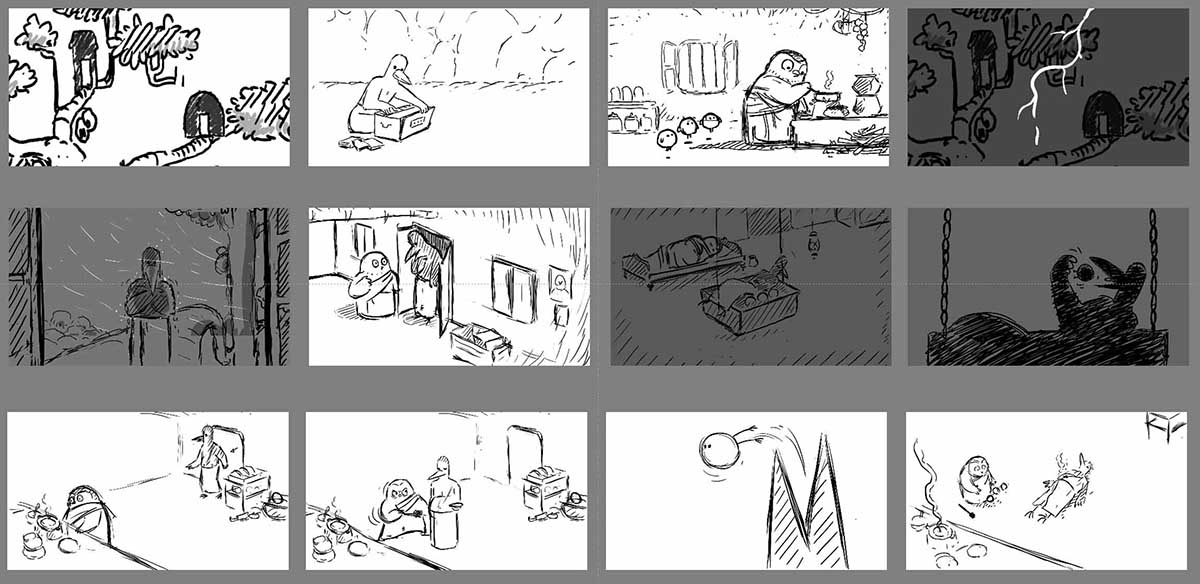
Storyboards for the film ‘Ek Doni Teeni’.
His recent work has nostalgic undertones of a simple village life. Lush with awe-inspiring characters, thoughtful stories and catchy folk songs, Konkani Chitra Kavitha is a growing collection of stories that are the dear to the Konkani households.

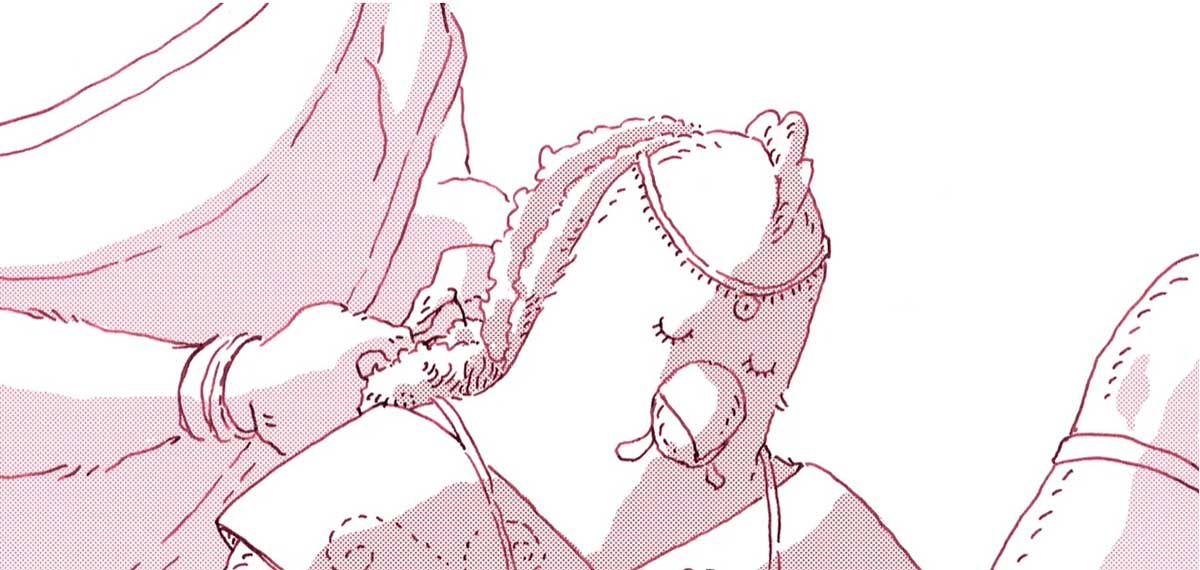
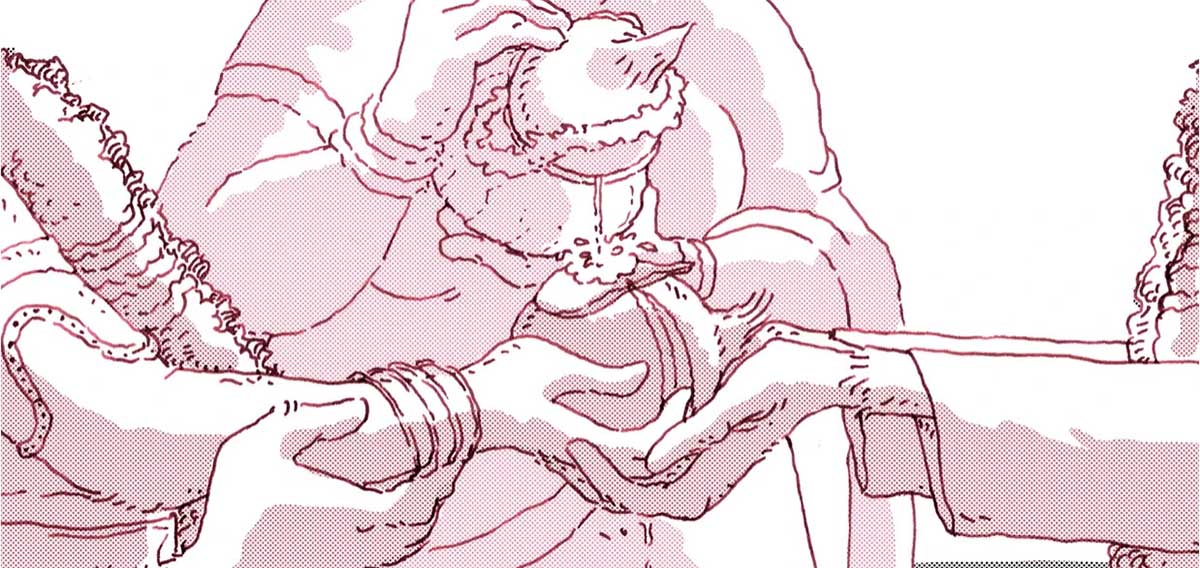
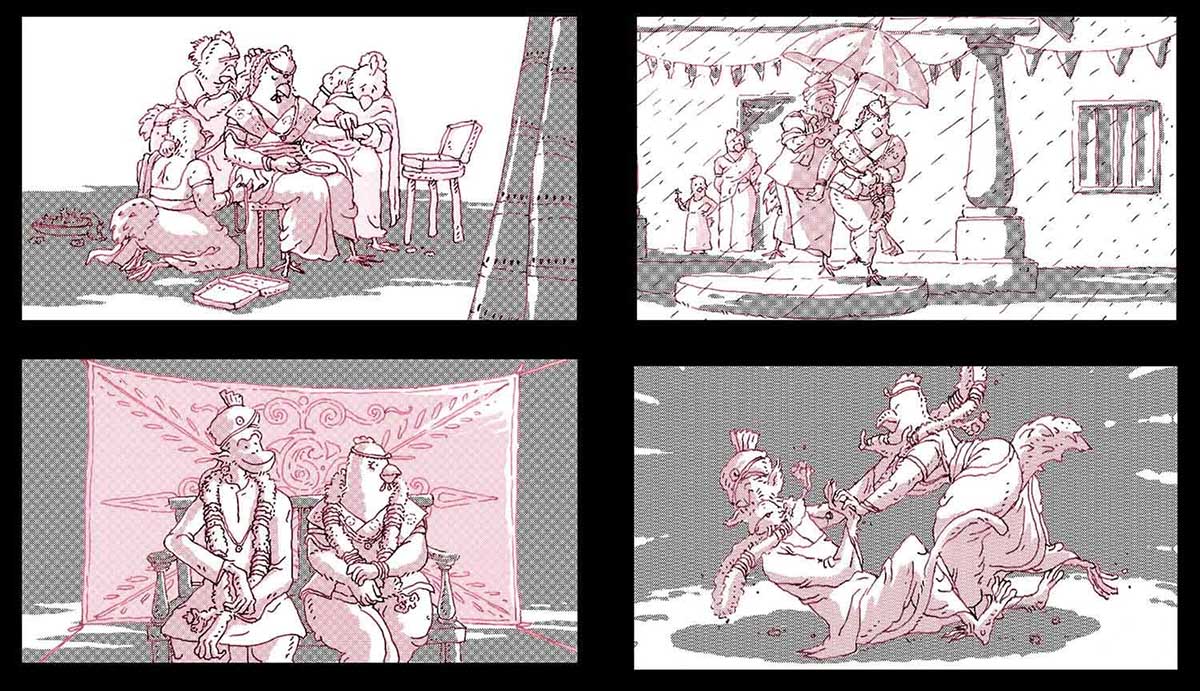
Stills from Kunkda Mankdak Vardik ( Hen and Monkey's Wedding)
His first short was an illustrated Konkani Folk Song- Kunkda Mankdak Vardik ( Hen and Monkey's Wedding). The cheeky yet thought-provoking visuals are accompanied by children singing the folksong.
“Many commented, it helped their kids to keep in touch with their mother tongue. So, I thought, I could come up with some ideas, or premises, to introduce some Konkani words. That’s the start of- Konkani Chithra Kavitha.”
Recording the scripts whenever Srinivas was in India with the help of his relatives or their kids, he began producing the films. He used software such as TV paint, Blender, Adobe Photoshop and Premiere to create these shorts.
Another one his shorts ‘Pathrado’ (which is a popular Konkani delicacy), delves into the life of a middle-aged couple. The idea stemmed from his own experiences of seeing patriarchal Konkani households, where, husbands are well taken care of by their wives and the males are being served quietly by the women.
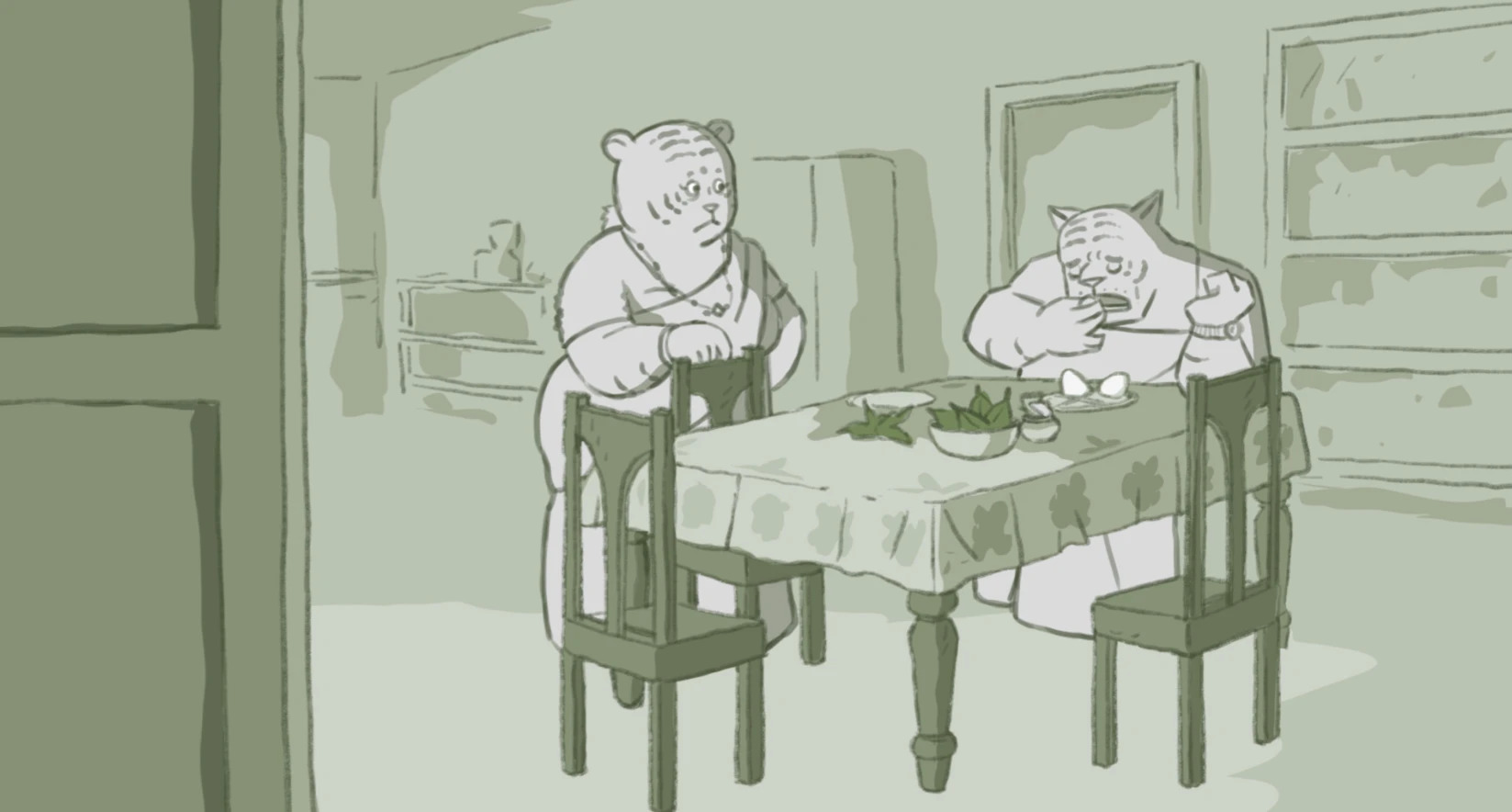

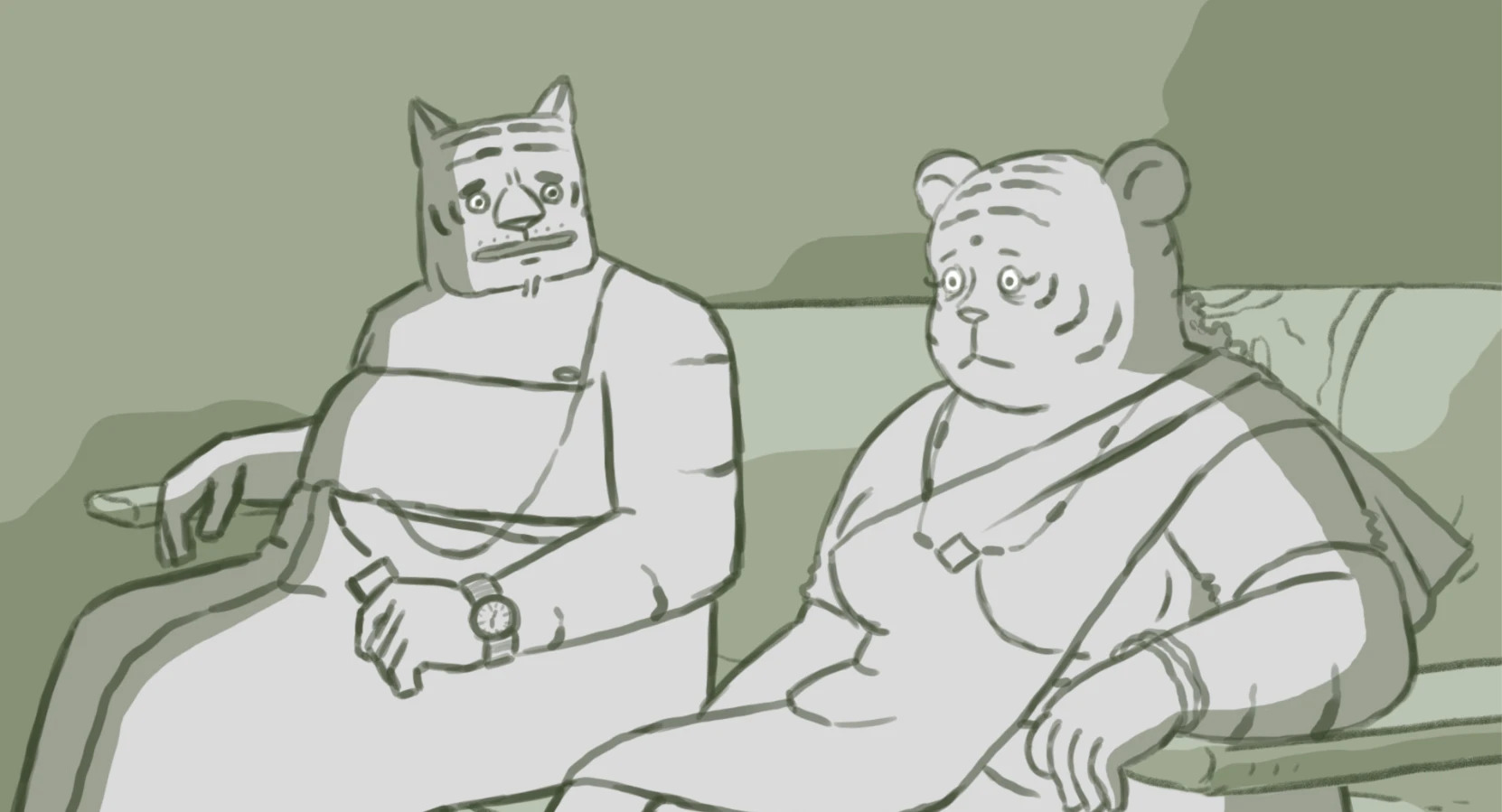
Stills from ‘Pathrado’
“About the character design, Konkani people are the proud kind, so I wanted them to be the tigers, and I thought it would be amusing to see a tiger turning to a vegetarian and eating Pathrado.”


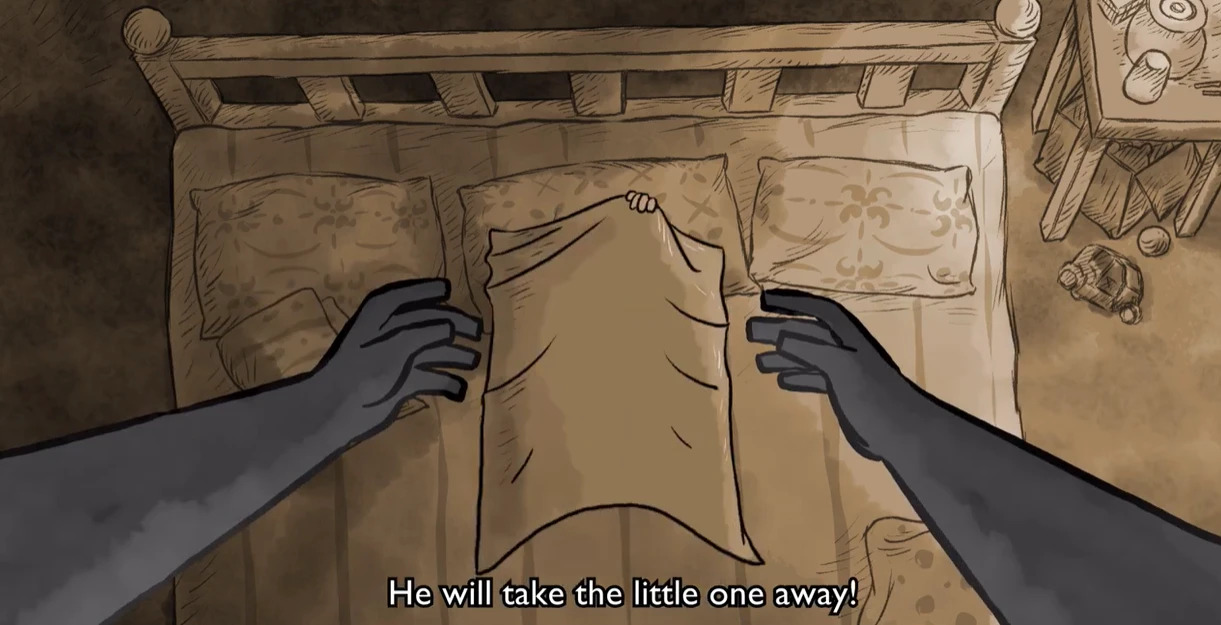
Stills from ‘Ghongo’
His film ‘Ghongo’ was inspired from the story his elders told to scare the kids. The narrative was an effort to visualize the boogeyman of his times.

Talking about developing his films, Srinivas says, I try to develop a concept very specific to the culture or set up that I am portraying. From memory, I choose and place visual elements that could help tell the story effectively. At times, I will check with my elders or relatives to reaffirm my memory. I am not very good with colors, so usually I use minimum and muted color to serve the purpose.”
Talking about the 2D Animation today, Srinivas says, “The challenging part has been to come up with interesting content and new ideas to engage the viewers with aesthetically pleasing visuals as the time changes. However, 2D animation is still expensive, in terms of time and money, and still not that easy to run a successful business.”
“What is most exciting now is the audience is more open to different kinds of content. There is less language barrier since the audiences are used to the subtitles. It is also good to see many young animators coming up with local content.”
On that optimistic note, we come to the end of this feature. We thank Srinivas Bhakta for his valuable insights on animation and independent films. With the hope to see more spectacular regional stories we wish him all the best for the future!
You can find Srinivas Bhakta and his work on the channels below

Srinivas Bhakta
Srinivas’s Hot Take on Generative AI:
Animation is an art of storytelling, and these are just tools which could help us to ease our process of that. Yes, there will be impact. Perhaps some jobs will vanish, but new jobs will be created around this. Not to forget, to take care of aesthetics of each aspect of animation film making, definitely there will be always a need of trained brains and a pair of eyes.

